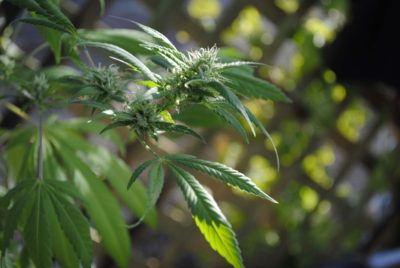
Thirty states and the District of Columbia have legalized the use of marijuana for medicinal purposes.
As with any substance that has mind altering properties associated with it, marijuana is controversial. In this country there are only three non-pharmaceutical mind altering drugs that are available legally: alcohol, nicotine and caffeine. Caffeine is the only one without age constraints for its use and it is often combined with large amounts of sugar making it a particular health risk.
Marijuana is a current subject for debate for a number of reasons. It is costing the taxpayers hundreds of billions of dollars to fund attempts at controlling its use. This monumental effort to control the use of marijuana stems from its legal stature. In 1972, the US Congress placed marijuana in Schedule I of the Controlled Substances Act because they considered it to have “no accepted medical use.” Since then 30 of 50 US states and the District of Columbia have legalized the medical use of marijuana. Arizona is one of these states. It is estimated that 35 million U.S. citizens use marijuana regularly and that over half of U.S. citizens have used it at some time.
As with any plant, there are hundreds of different chemical constituents in the marijuana plant. The two that garner most of the attention are THC (delta-9 tetrahydrocannabinol) and CBD (cannabidiol). THC is the constituent that produces the altered mental states. Sophisticated cultivation techniques have increased the concentration of THC in medicinal plants from the previous 2-4% to the current 20% strains. Some plants are cultivated for their fiber and contain only trace amounts of THC. They are usually referred to by their general name “hemp.”
Cannabidiol (CBD) has gained extraordinary recognition recently as a key constituent related to health benefits.
Some common uses for marijuana in the medical community include the control of nausea and vomiting due to the side effects of chemotherapy drugs, the stimulation of appetite in patients wasting away from cancer or AIDS, the decrease of intraocular pressure from glaucoma, pain relief, and as a mood elevator. “Medical Marijuana,” as designated in those states that have legalized it, is restricted to use for patients with cancer, glaucoma, Alzheimer’s, hepatitis, ALS and chronic pain, as well as PTSD.
The active cannabinoid constituents are at least as effective as some conventional medications for nausea. Some of these conventional medications are Compazine, Reglan, and Torecan. Cannabinoids from marijuana also appear to be similar to codeine for the treatment of pain.
The Federal Drug Administration has approved THC use in the form of a drug called Marinol for the control of side effects from chemotherapy and AIDS.
Recent strains of marijuana have been developed with different effects on alertness. For example, sativa plants increase alertness whereas indica plants decrease alertness. Today’s market contains over a hundred strains with distinct effects and applications.
Quoting from NeuroReport medical publication: To investigate CNS effects of frequent marijuana use, brain tissue volume and composition were measured using magnetic resonance imaging (MRI) in 18 current, frequent, young adult marijuana users and 13 comparable, non-using controls. Automated image analysis techniques were used to measure global and regional brain volumes, including, for most regions, separate measures of gray and white matter. The marijuana users showed no evidence of cerebral atrophy or global or regional changes in tissue volumes. Volumes of ventricular CSF were not higher in marijuana users than controls, but were, in fact, lower. There were no clinically significant abnormalities in any subject’s MRI. Sex differences were detected in several global volume measures.
As with any herb (plant), marijuana contains constituents (ingredients) that can be useful to living creatures. It is currently being offered in many forms. It can be eaten as brownies, cookies, etc. and rubbed on as a lotion, as well as inhaled as smoke or vapor. It is possible to combine it with other medicinal herbs to address specific needs. We live in a time when many useful plants are being regulated by powers with less than forthright intentions. Our recourse is to participate in open forthright discourse.
